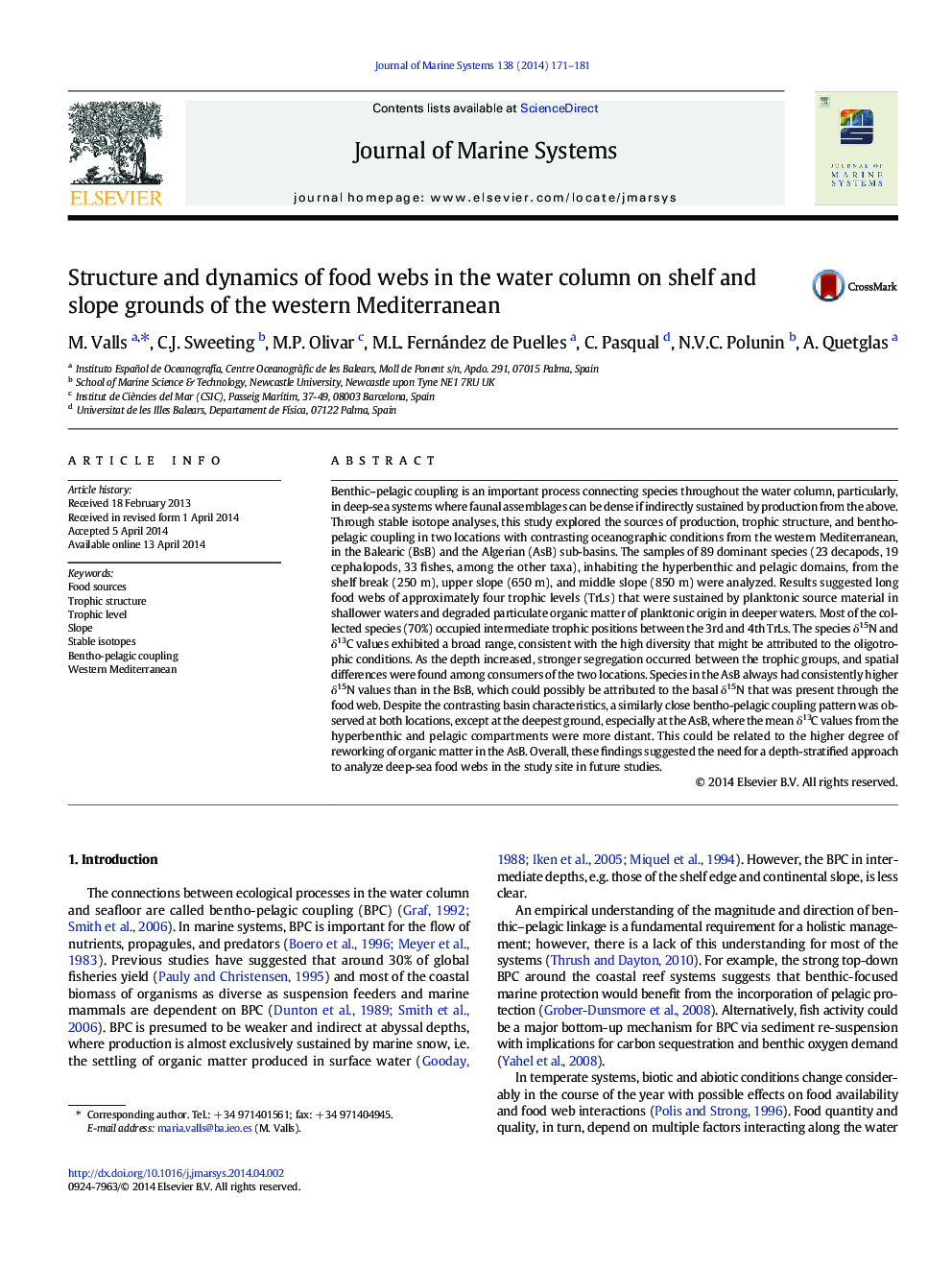| کد مقاله | کد نشریه | سال انتشار | مقاله انگلیسی | نسخه تمام متن |
|---|---|---|---|---|
| 4548009 | 1627291 | 2014 | 11 صفحه PDF | دانلود رایگان |
• Stable isotopes were used to study trophic structure of marine faunal assemblages.
• We examined bentho-pelagic coupling at spatial scale.
• With increasing depth, stronger segregation occurred between the trophic groups.
• High trophic diversity might be attributed to the oligotrophic conditions.
• Close bentho-pelagic coupling pattern was observed except at the deepest ground.
Benthic–pelagic coupling is an important process connecting species throughout the water column, particularly, in deep-sea systems where faunal assemblages can be dense if indirectly sustained by production from the above. Through stable isotope analyses, this study explored the sources of production, trophic structure, and bentho-pelagic coupling in two locations with contrasting oceanographic conditions from the western Mediterranean, in the Balearic (BsB) and the Algerian (AsB) sub-basins. The samples of 89 dominant species (23 decapods, 19 cephalopods, 33 fishes, among the other taxa), inhabiting the hyperbenthic and pelagic domains, from the shelf break (250 m), upper slope (650 m), and middle slope (850 m) were analyzed. Results suggested long food webs of approximately four trophic levels (TrLs) that were sustained by planktonic source material in shallower waters and degraded particulate organic matter of planktonic origin in deeper waters. Most of the collected species (70%) occupied intermediate trophic positions between the 3rd and 4th TrLs. The species δ15N and δ13C values exhibited a broad range, consistent with the high diversity that might be attributed to the oligotrophic conditions. As the depth increased, stronger segregation occurred between the trophic groups, and spatial differences were found among consumers of the two locations. Species in the AsB always had consistently higher δ15N values than in the BsB, which could possibly be attributed to the basal δ15N that was present through the food web. Despite the contrasting basin characteristics, a similarly close bentho-pelagic coupling pattern was observed at both locations, except at the deepest ground, especially at the AsB, where the mean δ13C values from the hyperbenthic and pelagic compartments were more distant. This could be related to the higher degree of reworking of organic matter in the AsB. Overall, these findings suggested the need for a depth-stratified approach to analyze deep-sea food webs in the study site in future studies.
Journal: Journal of Marine Systems - Volume 138, October 2014, Pages 171–181
